If you’re planning a trip to Thailand you may find yourself in an internal moral debate on whether visiting an elephant camp is ok. If so, first of all good for you! Awareness and asking questions are the first step to making ethical choices when it comes to something as controversial as animal tourism. This article is going to dive into the truth on elephant sanctuaries in Thailand. I’ve focus the information on science-based research, plus my own person experience at various elephant sanctuaries in Thailand. From here, you can make your own decision on what you believe is right. Let’s get into it!
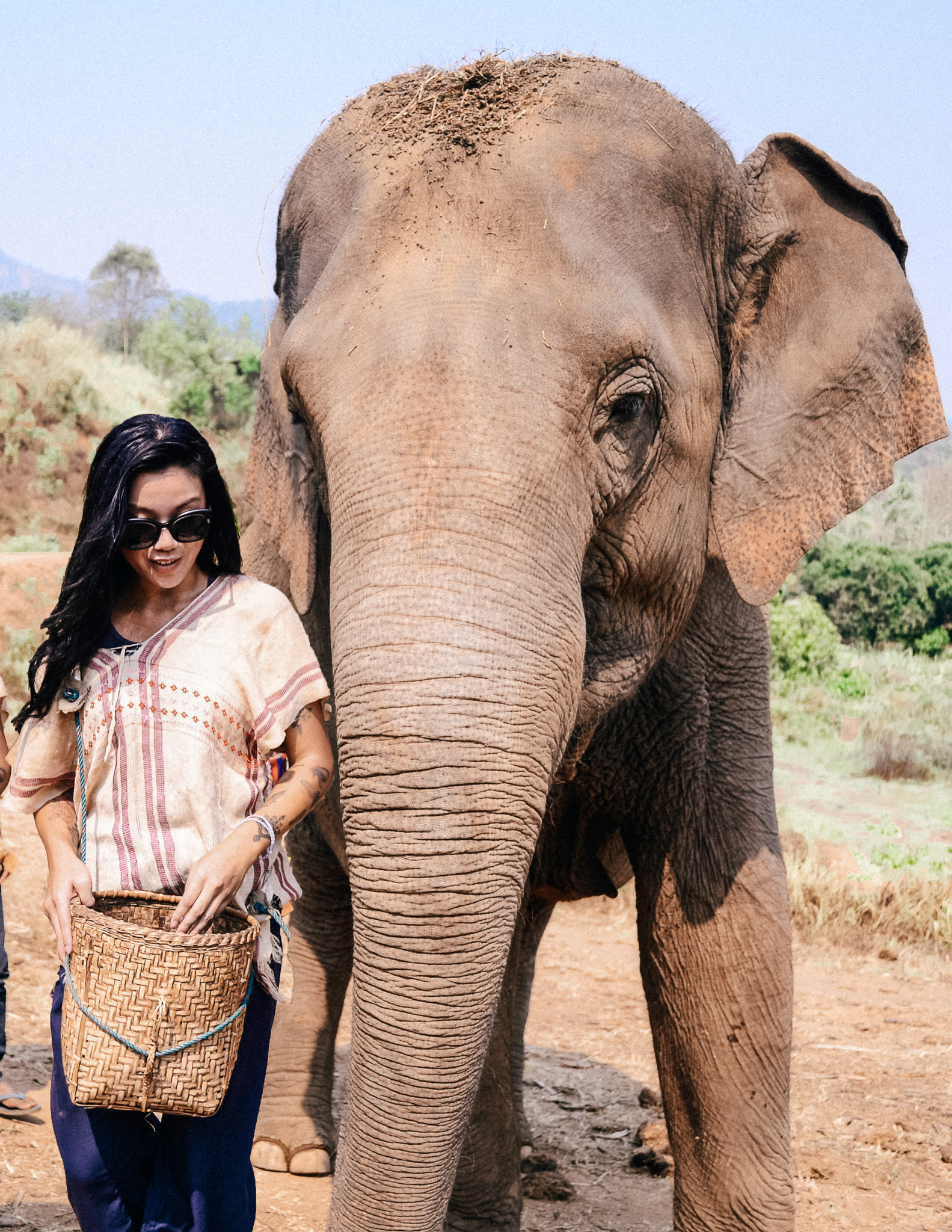
History of Elephants in Thailand
The type of Elephant in Thailand is of the Asian elephant, specifically the Indian Asian elephant. They are a slightly different species from other sub-species of Asian elephants. Also worth mentioning, they are an entirely different species from the much larger African elephant.
Thai elephants originate from around the Northern part of Thailand around Mae Hong Son, near the border with Myanmar. Their natural habitat is in the tropical rainforests. There, they eat a varied plant based diet of bananas, tree bark, leaves, bamboo and other tropical fruit.
Thai Culture and Elephants
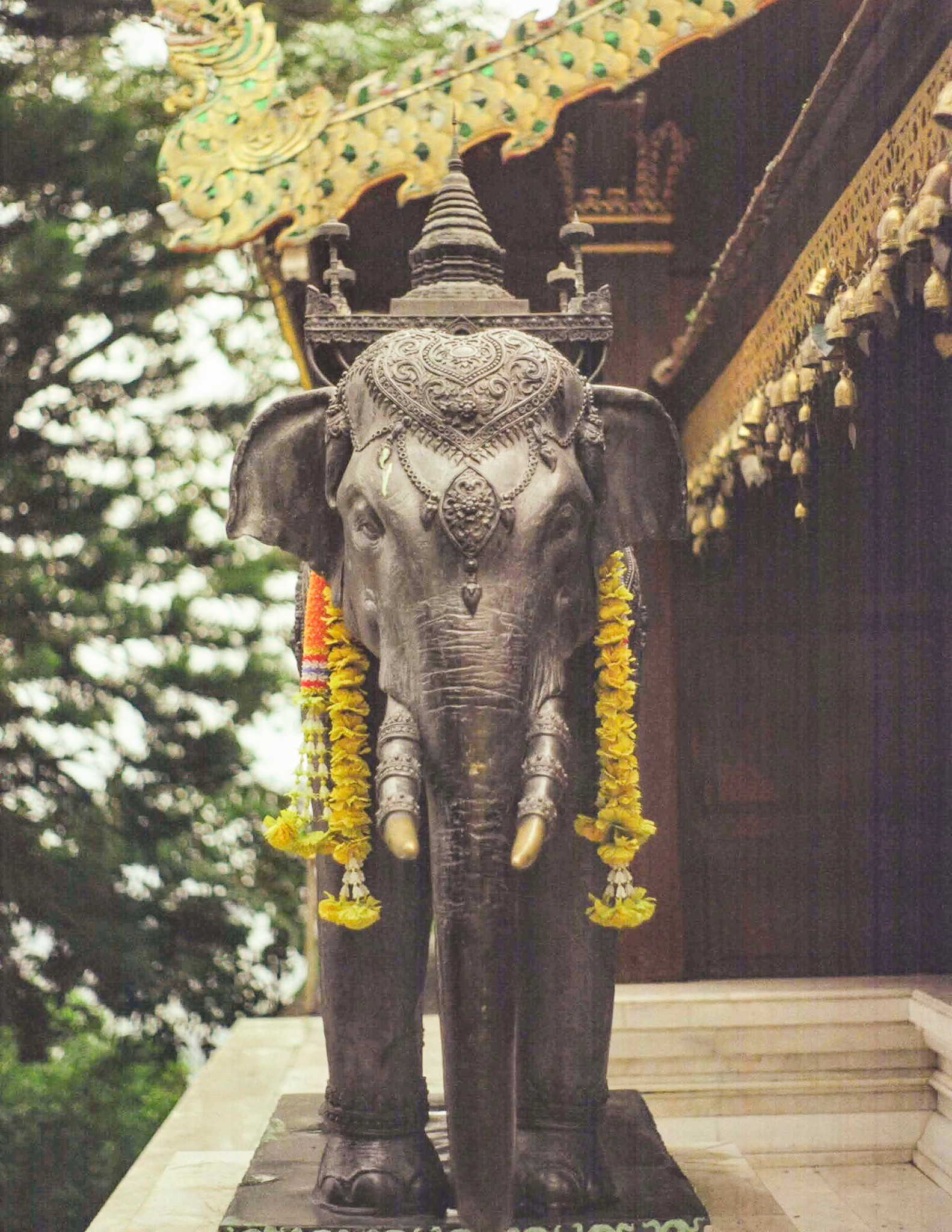
Historically, the relationship between Thai culture and elephants is quite a contradiction. On one hand, elephants are the beloved mascot of the country, and a symbol of good luck. But for thousands of years elephants were used for anything ranging from hard labor, as war animals, royal pets, and for entertainment purposes.
In the last century, elephants were used for hard labor and logging in the forests. When logging became outlawed in 1989, the elephants and their owners were out of work and reduced to begging. In this era, you could see elephants wandering the streets of Bangkok begging for food.
By the 1990s, Thailand saw a huge increase in tourism. Locals quickly learned that elephants were a huge attraction for foreign visitors. Then came the era of elephant rides, elephant encounters, and elephant shows. These were all widely accepted, until recently when the unethical aspects of it were brought to light.
Elephants in Thailand Today
Today, elephant riding and other forms of elephant entertainment still exists. However, there has been a drastic shift towards more ethical ways to encounter elephants in Thailand. Elephant sanctuaries are now vastly popular, in both number and in popularity with tourists. Likely, this is a result of people become more educated on animal welfare. Most tourists coming to Thailand still include some form of elephant encounter in their trip.
Various groups advocating captive elephant welfare were also created. These groups monitor and report on researched based information on how to better serve the elephants best interests. But as an industry with a very depressing track record, it begs the question of just how ethical these sanctuaries are.
The Truth About Elephant Sanctuaries in Thailand
Many people question the true ethicality of these elephant sanctuaries, and not without reason. Some who fiercely advocate the well-being of the elephants may wonder why they can’t just be released into the wild. Some may argue it can’t be deemed ethical to make any profit off of elephants at all.
Truthfully, it’s not that simple, and the idea in itself is telling of a lack of research and a little bit of ignorance. Here’s the truth about understanding elephant sanctuaries in Thailand.
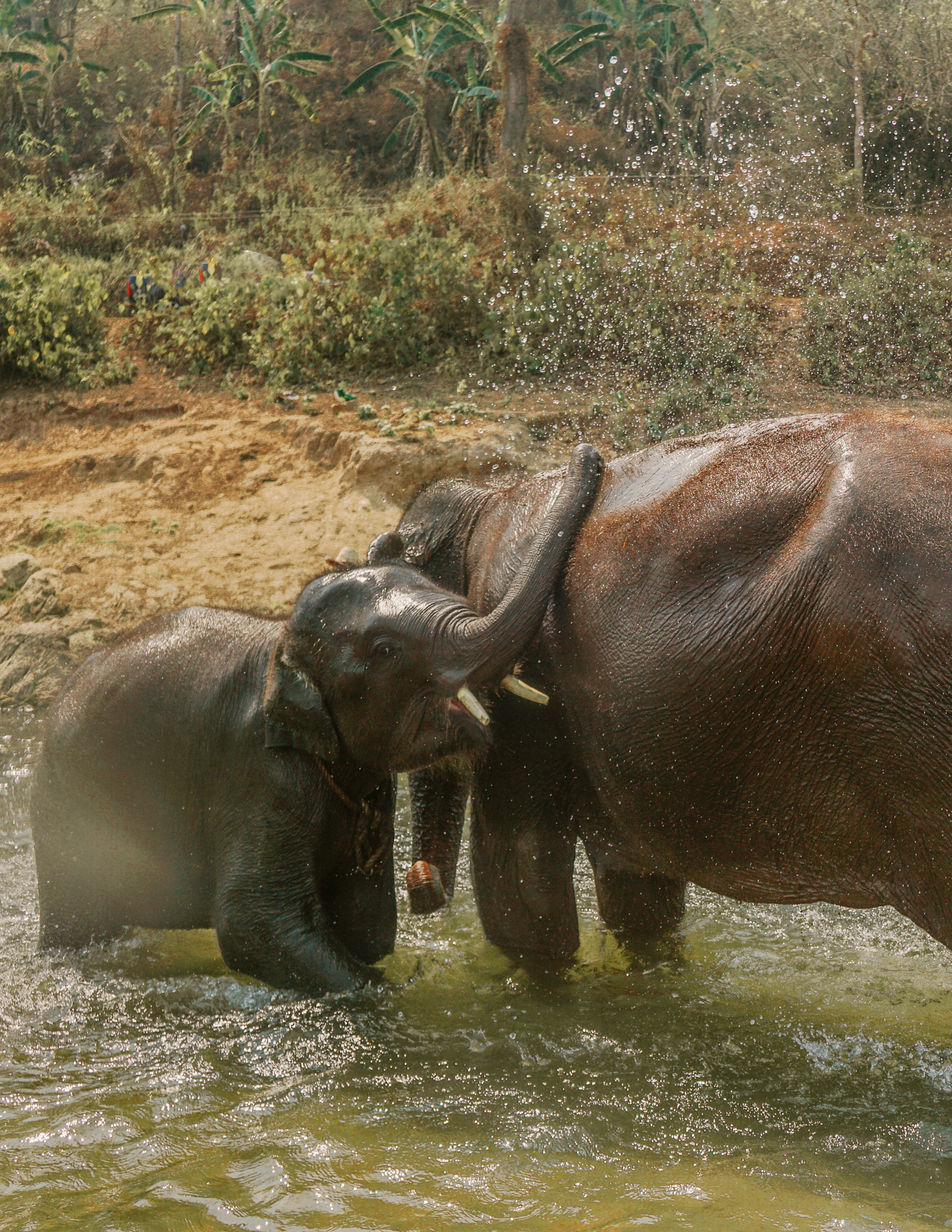
Why They Can’t Go Back Into The Wild
The first hard truth is that these elephants actually may not be able to go back into the wild. For many reasons, including their own welfare. Below are the main reasons why.
1. Lost Foraging Skills
The main reason it doesn’t work to just release the elephants, is because many of them have been born into captivity. These elephants simply never learned to forage for food, and like a pet dog, they rely on humans to feed them. Letting them off into the wild, with no intensive conservation and re-habilitation efforts would be disastrous for their own survival.
2. Not Enough Resources
In the year 1850, there were over 100,000 elephants across the rainforests of Thailand. Today, it’s estimated that there are less than 7,000 are left, both domesticated or wild. This is a direct result of the huge loss of their natural habitats. As Thailand developed, lots of rainforests were cleared out or reduced by logging. While this is totally at the fault of humans, the sad reality is there simply isn’t enough natural resources left to allow elephants to survive in the natural environment.
3. Competing With Wild Elephants
There are over 3,800 elephants believed to be domesticated in Thailand, and only about 3,000 that are in the wild. If all 3,800 domesticated elephants were released at once, they would compete with the wild elephants for the already very limited resources. Unfortunately, there just isn’t enough of their habitat or food left in the wild to allow a population even this small to thrive.
4. Risk of Being Poached
Poaching was a huge problem in the past, and even with the banning of ivory, it still remains a threat. Also, elephants that are released run the risk of being captured and used illegally for logging purposes in or around the border of Myanmar.
5. It’s Illegal
Elephant owners can’t release domesticated elephants because it’s actually illegal under Thai Law. Randomly releasing a domesticate elephant is just not an option for law abiding citizens.
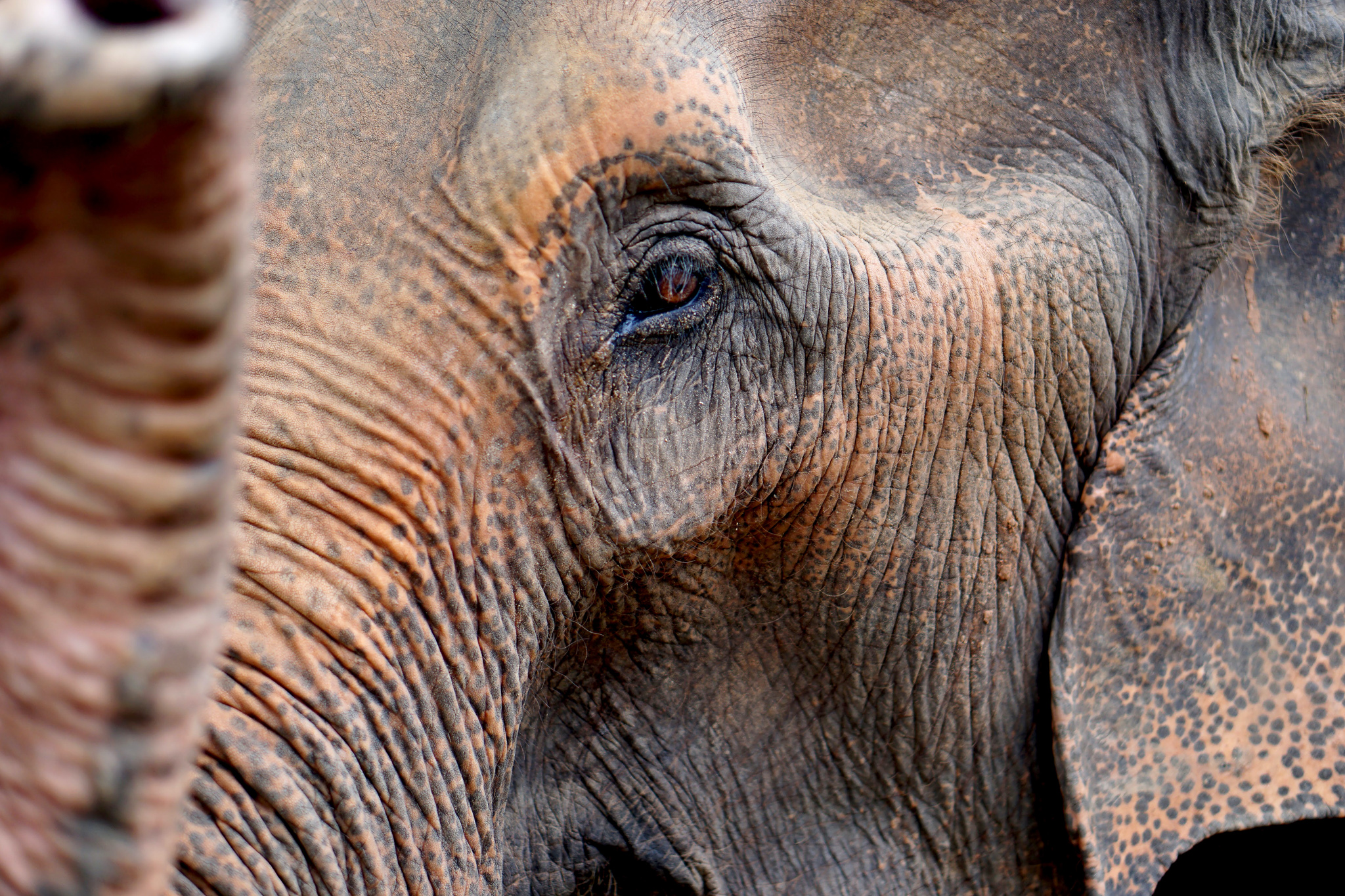
Now that we understand why elephants can’t magically re-integrate into the wild after generations of domestication, we can learn what role elephant sanctuaries play in their livelihood.
Profit is Needed to Feed Them
An elephant eats about 10% of its body weight per day. In Thailand, it costs an average of $40 USD to feed a fully grown elephant. This doesn’t factor in any other costs related to their care. That $40 is already 3 times more than the daily minimum wage salary in Thailand.
Some have this idea that any venture that uses animals to turn a profit is automatically unethical. Honestly, I also used to believe this before I did my own research. After learning that domesticated elephants rely on humans to feed and take care of them, it becomes easier to see why this comes at a cost.
The hard truth is that owners need to come up with the money in some way, otherwise the elephants may not get enough to eat. For most, the easiest way to raise funds is from tourists dollars. You may think the price you pay to visit an elephant sanctuary in Thailand just goes to line the pockets of people. You aren’t totally wrong, it’s good to be skeptical in this regard.
The money you pay to observe elephants in these sanctuaries is actually the main source funding the elephant’s food. That, and maybe some government grants, but not always.
Boycotting Doesn’t Help Elephants
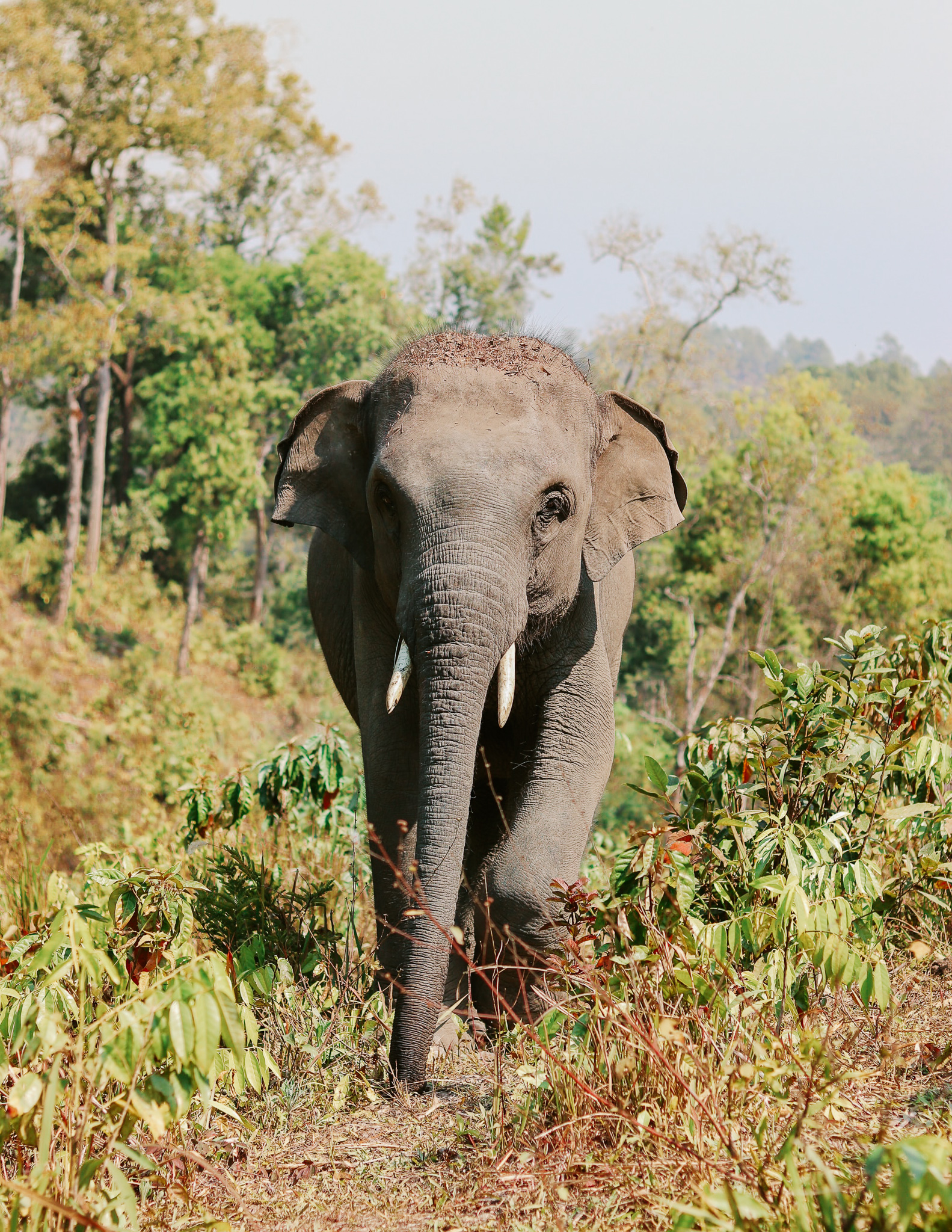
Despite what some believe, boycotting elephant camps altogether does not really benefit the elephants in any way. If you’re hoping that by doing so, they’ll be released into the wild, I hope after reading this far you understand why it won’t.
Boycotting all sanctuaries can do a lot of harm. Especially if you boycott ones that genuinely do adhere to standards and maintain a high quality life for the elephants. Less funds equals less food for the elephants. If owners are low on funds, they have no choice but to feed them lower quality food which negatively impact the elephants life quality.
A good article on this subject can be found here. It explains how boycotting and entire industry equally punishes those who are doing wrong and those making an effort to do right.
Not all Sanctuaries are “Ethical”
Sadly, there is no standard for which elephant camp gets to call itself an elephant sanctuary. This is where research comes in. Many camps will have websites, online reviews and photos. If you see one with questionable practices, you can email them some follow up questions. Alternatively, you can just choose another camp altogether.
You should aim at putting your dollars towards supporting the most ethical elephant sanctuaries. Through thoughtful research and asking questions is where you’ll get to make your informed decision on where that is.
How to Choose an Ethical Elephant Sanctuary
So, you want to be sure you choose an ethical and true elephant sanctuary in Thailand. Here are some things to look out for. If a sanctuary ticks all these boxes, odds are its legit and they are doing things the right way.
Choose One With a “No Riding” Policy
There is contradicting research on the harm riding an elephant does. On one hand, the elephants mahout (caretaker) riding him sometimes might be fine. But dozens of tourists a day? Probably not.
There is some research to indicate the negative impact this has on the elephants. An elephant is also a highly intelligent animal. This type of entertainment can be viewed as degrading for the elephant, causing them much stress.
Surely, you don’t need to ride an elephant to enjoy seeing one. Opt out of any so-called elephant sanctuaries in Thailand that offer this type of experience.
Choose One Without Performances
Recently, there are less and less of these types of elephant camps because Thai people know that many tourists don’t approve of it. However, if you come across an elephant sanctuary that speaks of elephants doing tricks, that’s a red flag.
Elephants should not be used for human entertainment, especially not in such a crude way.
Choose One Without Bathing
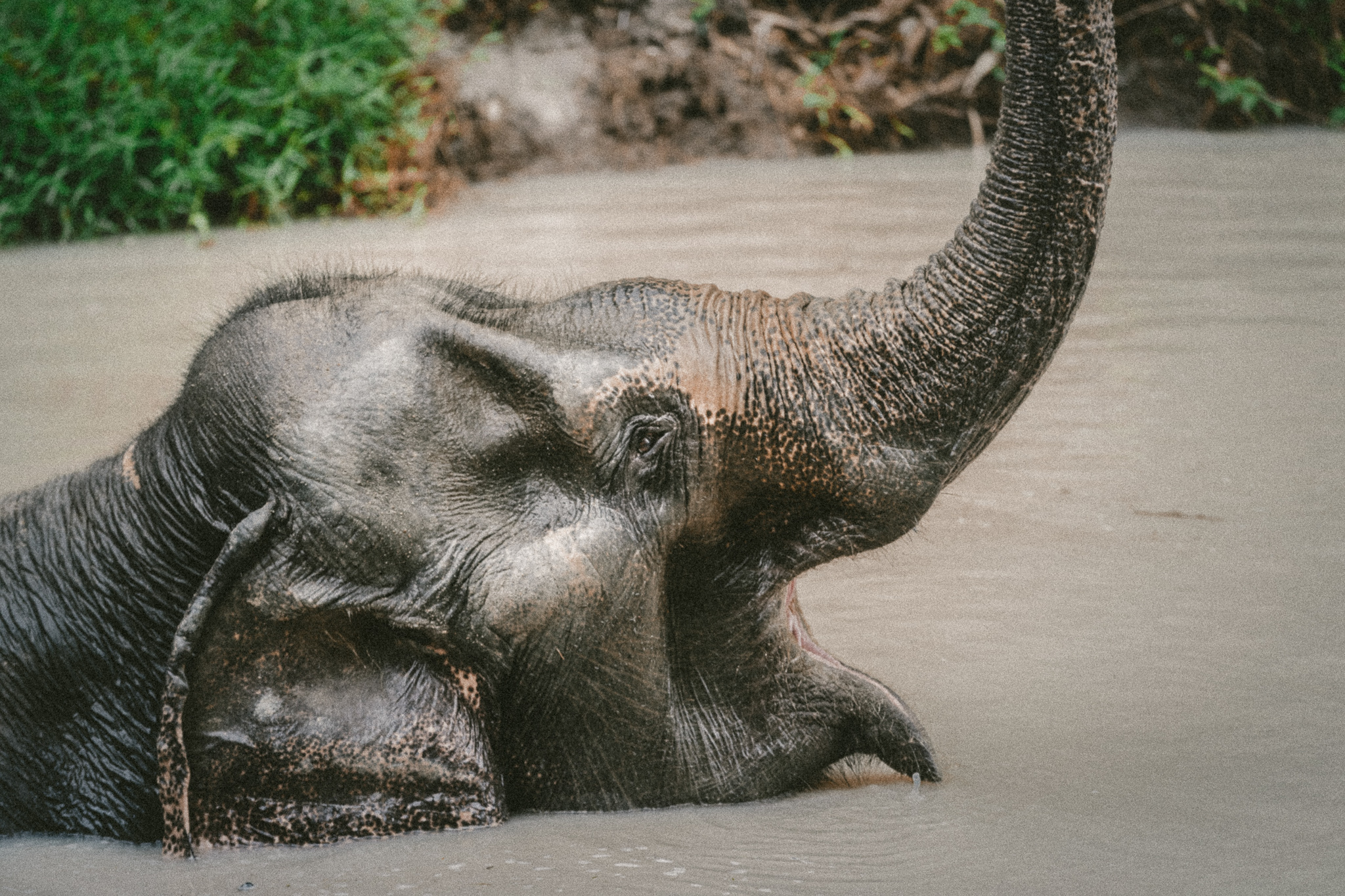
In the past, I’ve visited a camp that offered elephant bathing. Truthfully, the research is not fully conclusive yet whether this is really harmful for the elephants. But to be safe, it should be avoided.
Elephant bathing time is sacred, and probably should be carried out on their own time. Likewise, bathing with a hundred gawking tourists probably isn’t such a relaxing experience for the elephant.
It’s normal for elephants to bathe multiple times a day, especially in hotter months. Best to leave it up to nature, but there’s a good chance you can still observe this from a safe distance when visiting.
Look for One with an Educational Program
Generally, if an elephant sanctuary in Thailand is focusing visits on educating people on the animals, it indicates authenticity. For one, this means the keepers themselves care about the elephants well-being, and are knowledgeable on how to maintain it.
A camp that doesn’t offer any type of back information on their elephants is likely there for profit or for more entertainment purposes.
Ethical Elephant Sanctuaries in Thailand
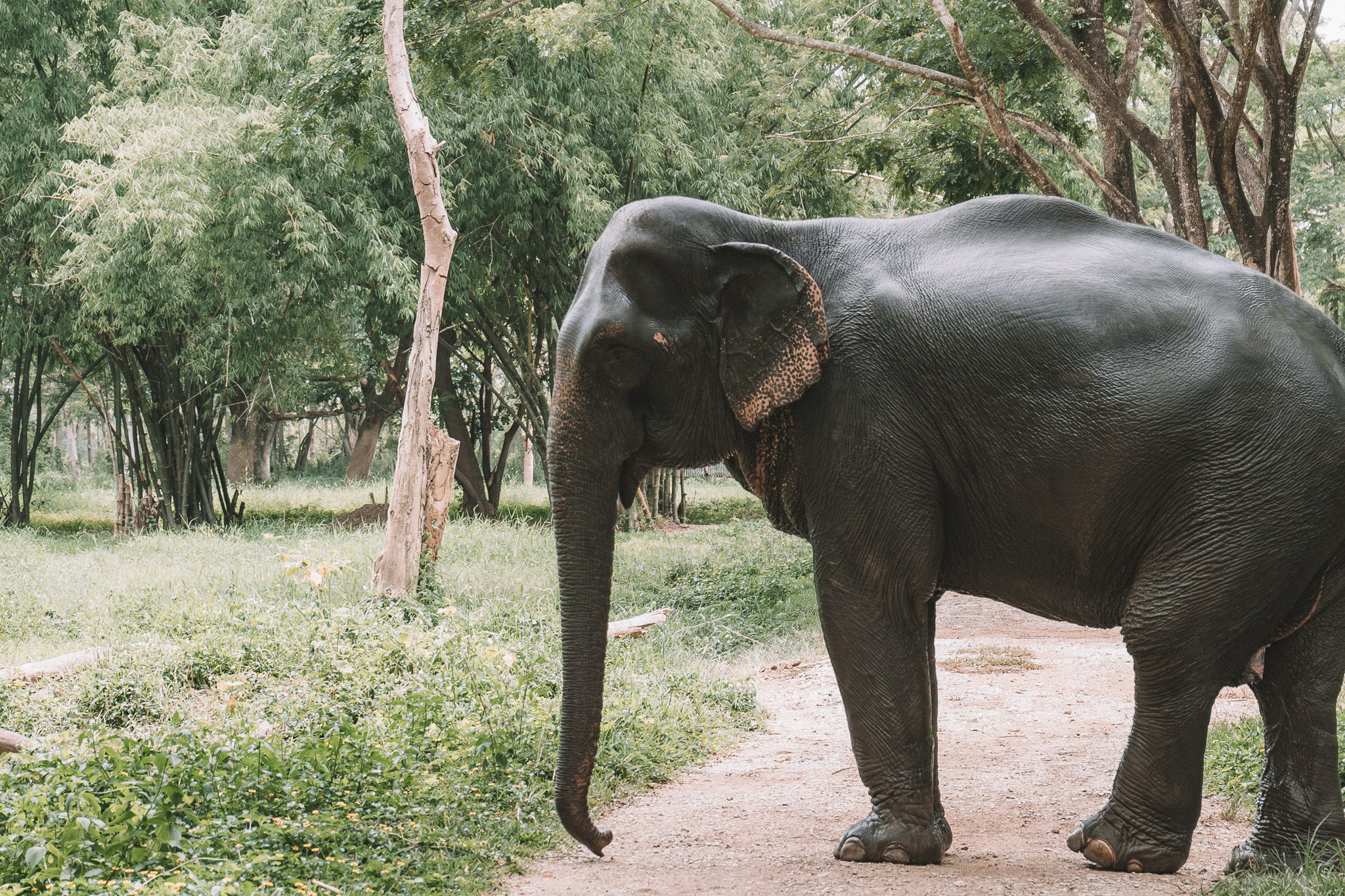
There are more than a handful of truly ethical elephant sanctuaries in Thailand. Here I’ll include only the ones I visited myself, and can confirm are legit as well as those I heard personally vouched for while in Thailand.
Elephant Nature Park
Elephant Nature Park is easily the most famous elephant sanctuary in Thailand. It’s owned by a local, who’s conservation efforts have saved countless elephants from abusive situations. She also started the Save Elephant Foundation, which works across southeast Asia to protect elephants.
This sanctuary is legit, the first time I went they did offer bathing. Once new research came to light that bathing with elephants may not be good for them, they got rid of this. They also offer overnight stays for volunteers who want to help out on the sanctuary.
This park is easily accessible from Chiang Mai, and is very popular. Usually when I went, I’d see several groups there. The park is huge, so that’s fine. But also, it may be nice to spread those tourists dollars around a bit more. If you have more time, maybe visit one of the lesser visited elephant sanctuaries in Thailand.
BEES Elephant Sanctuary
BEES Elephant Sanctuary is one of the only true elephant sanctuaries to adopt a strict “no touching” policy. While touching an elephant doesn’t do direct harm, there are reasons behind this. For one, they promote allowing the elephant to behave in their most natural way. Visitors are allowed to observe them in nature, but not touch or feed them.
They do allow volunteers to stay overnight. As a volunteer, your role would be to prepare the elephants food, but not feed them. You’d also clean their sleep area and care for the other rescue animals. If animal welfare is at the forefront of your priorities, this may be the best elephant sanctuary in Thailand.
Samui Elephant Sanctuary
If you are visiting the islands or south of Thailand, Samui Elephant Sanctuary is a closer option. The owner was mentored by the owner of Elephant Nature Park, and learned all about ethical practices when rescuing and caring for elephants. They’ve won awards for their rescue efforts and practices, as a testament to their legitimacy.
You can walk with the elephants, and feed them, but no bathing. At the time of writing, they don’t offer volunteer programs. But, you can foster an elephant of your choice and support their care.
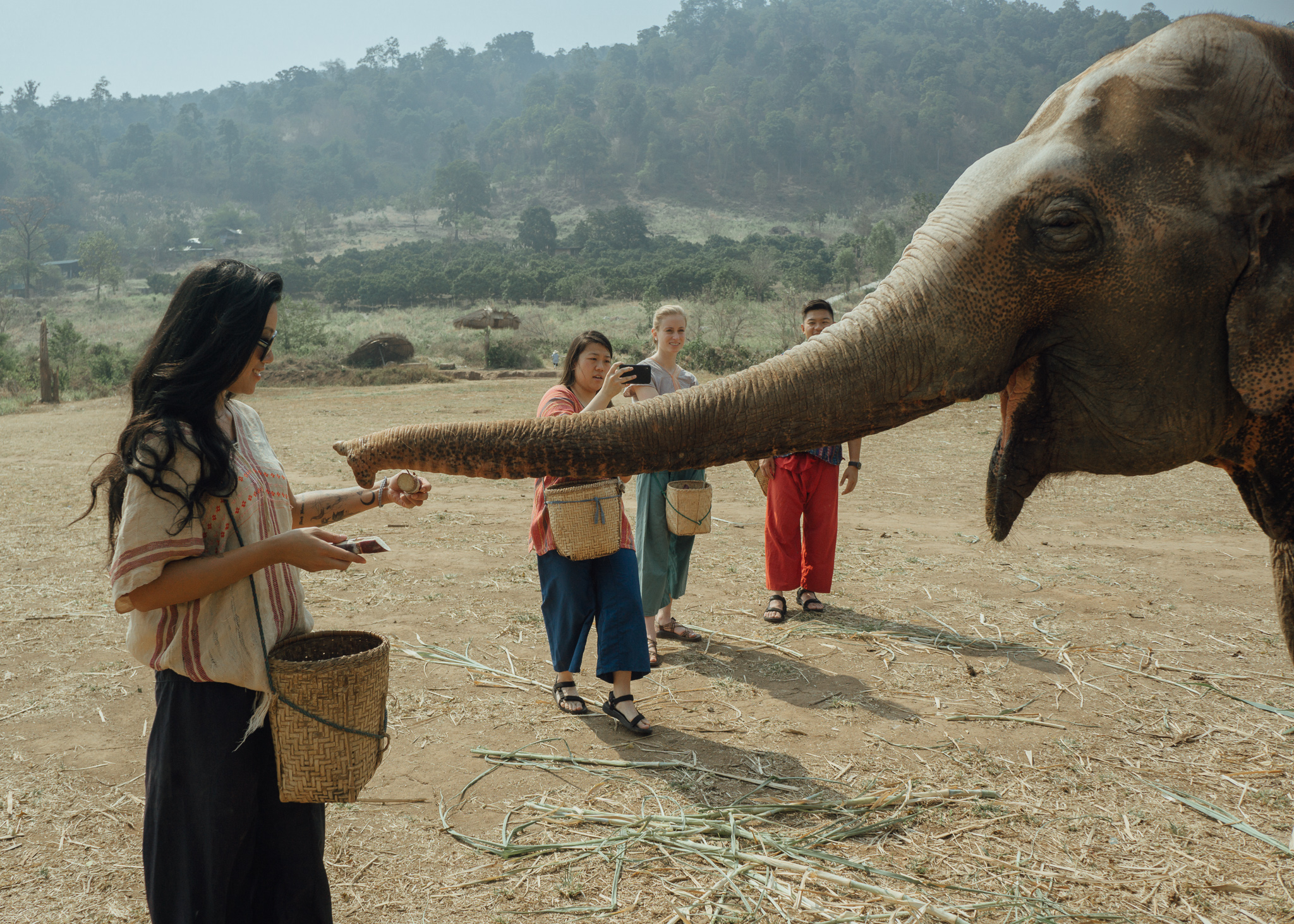
Facts About Thai Elephants
- 50% of Thai elephants today are in captivity
- 20% of all elephants in Thailand live in the Chiang Mai region
- You can still see wild elephants in Kui Buri National Park, Kao Yai National Park and Kao Noi National Park
- An adult Thai elephant can eat 300 lbs of food per day
- Thai elephants are super intelligent animals, proven to recognize themselves in mirrors
- Although Thailand is their natural habitat, it can be too hot for them. They squirt mud onto their backs to cool off
- Thai elephants can live for 60 years
- They are social animals, and need to be in herds of other elephants for optimal health and happiness
And that wraps up this article on the truth about elephant sanctuaries in Thailand. I hope this gives some meaningful insight to you on how to only support ethical animal tourism.
What about you? What was your favorite animal encounter in the world? Let me know, below!
 13 Best Beaches in Koh Phangan
13 Best Beaches in Koh Phangan How to Spend a Layover in Bangkok
How to Spend a Layover in Bangkok

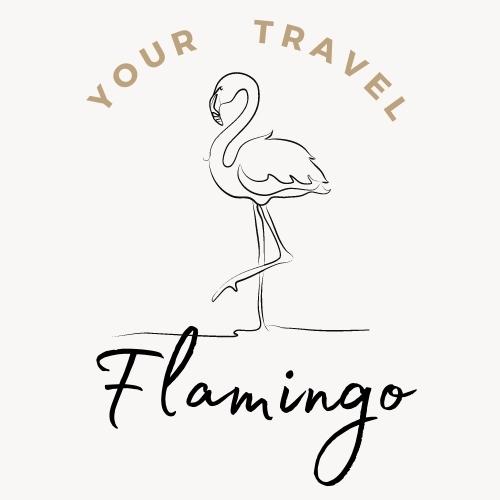
This guide is so helpful! I’ve never had an opportunity to visit an elephant sanctuary but I’ve always read bad things about them online. I can see why boycotting them completely isn’t helpful because those elephants still need looking after! I feel better equipped to know what I’m looking for when choosing an elephant sanctuary where the elephants are properly cared for. Thank you for sharing these tips!
Yeah sadly some of them are really bad. I feel sorry for the elephants and everything they’ve gone through. Such pure and amazing animals, they really deserve the best life possible 🙁 But luckily some places are properly caring for them so at least there’s hope!
This article was good & informative. All info accurate.
Only suggestion is to maybe update the list of humane sanctuaries as I see you’re missing a few that deserve to be included.
EVERYBODY NEEDS TO READ THIS! I’ve come across tons of well-meaning articles about elephant sanctuaries but you’re literally the first to own the unpopular opinion that boycotting them really doesn’t do anything. So in love with your writing (and photos!)!!
Yeah, I saw the boycotting movement and always wondered what happens after the boycott. The article was really helpful in putting that all in perspective.
Great Guide! It’s so hard to figure out who’s legit sometimes!
So true!
Really interesting post! I read that article in National Geographic a while ago that showed how almost all animal related tourism is terrible for the animals. But you are so right that just boycotting sanctuaries won’t help the elephants that are already domesticated (it is scary that 50% are!)
I also heard that some “sanctuaries” share elephants with the places that allow tourists to ride (so they go to the sanctuaries for rest days between working for the tourists…) It sounds like if you visit genuine sanctuaries, like the ones you listed, it can actually help these amazing animals. You just have to be sooo careful when you choose where to spend your money!
In the past, I did visit a “sanctuary” that didn’t offer riding to my group.. but offered it to another group. It is tricky navigating the situation and that’s why research is necessary. But there are people trying to do the right thing, and I hope that if we direct our money that way, others will have no choice but to follow!
Thank you for sharing! This was very informative.
Very thorough research and well documented information. Such a tricky subject with many animal activists just straight up saying don’t go. Promoting people to care for and respect wildlife is the key. Unfortunately, seeing these friendly giants in person can sometimes be the most effective way to promote the above. This somewhat relates to David Attenboroughs view on zoos.
Thanks for reading Anthony! Yeah I am definitely guilty of more black and white thinking in regards to animal welfare in the past, but as you said, it’s a tricky subject. I am glad that it’s more often nowadays a topic for discussion though, as that means more people are beginning to care. Definitely agree that seeing elephants up close and in person is an amazing experience as well!